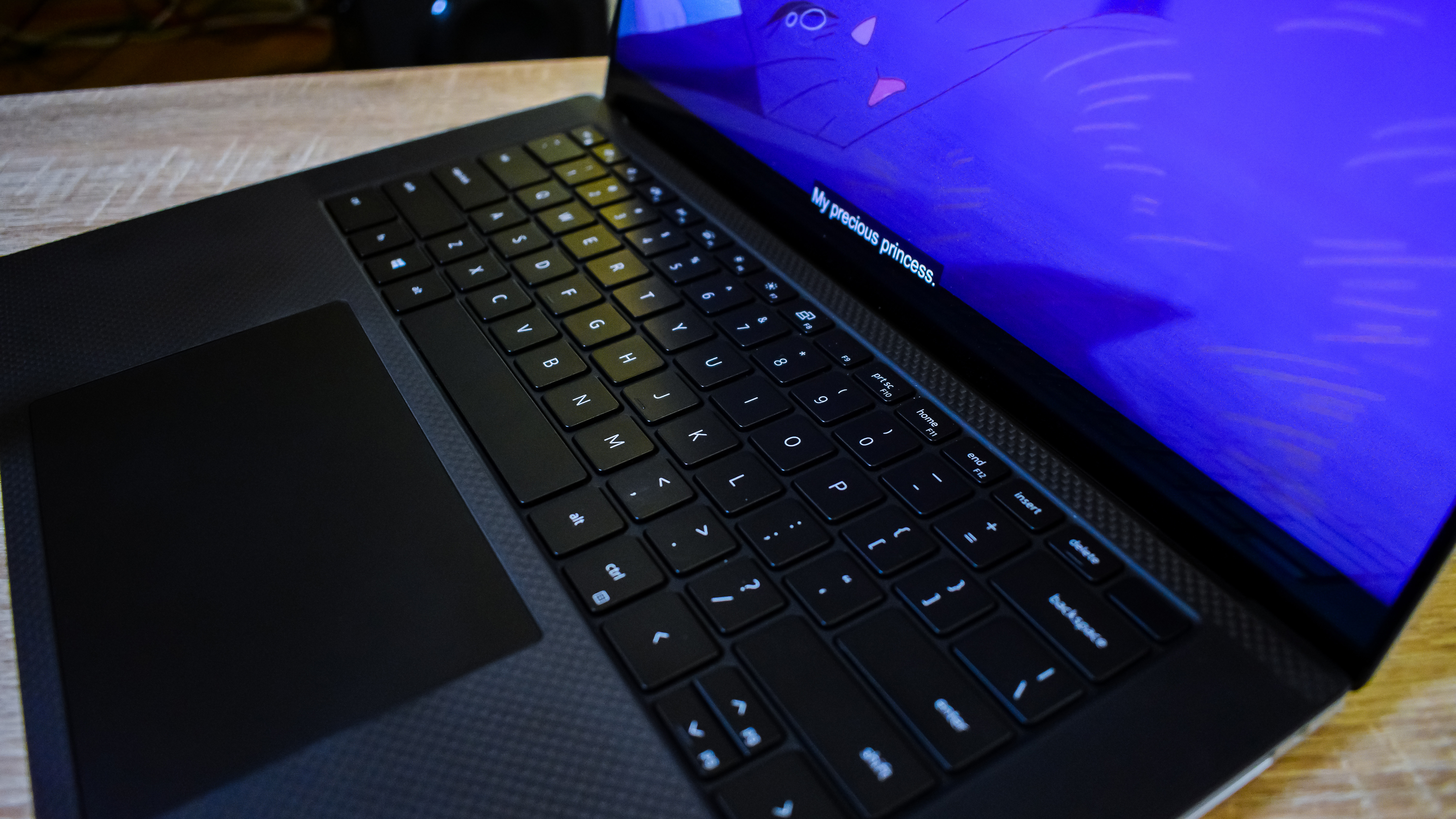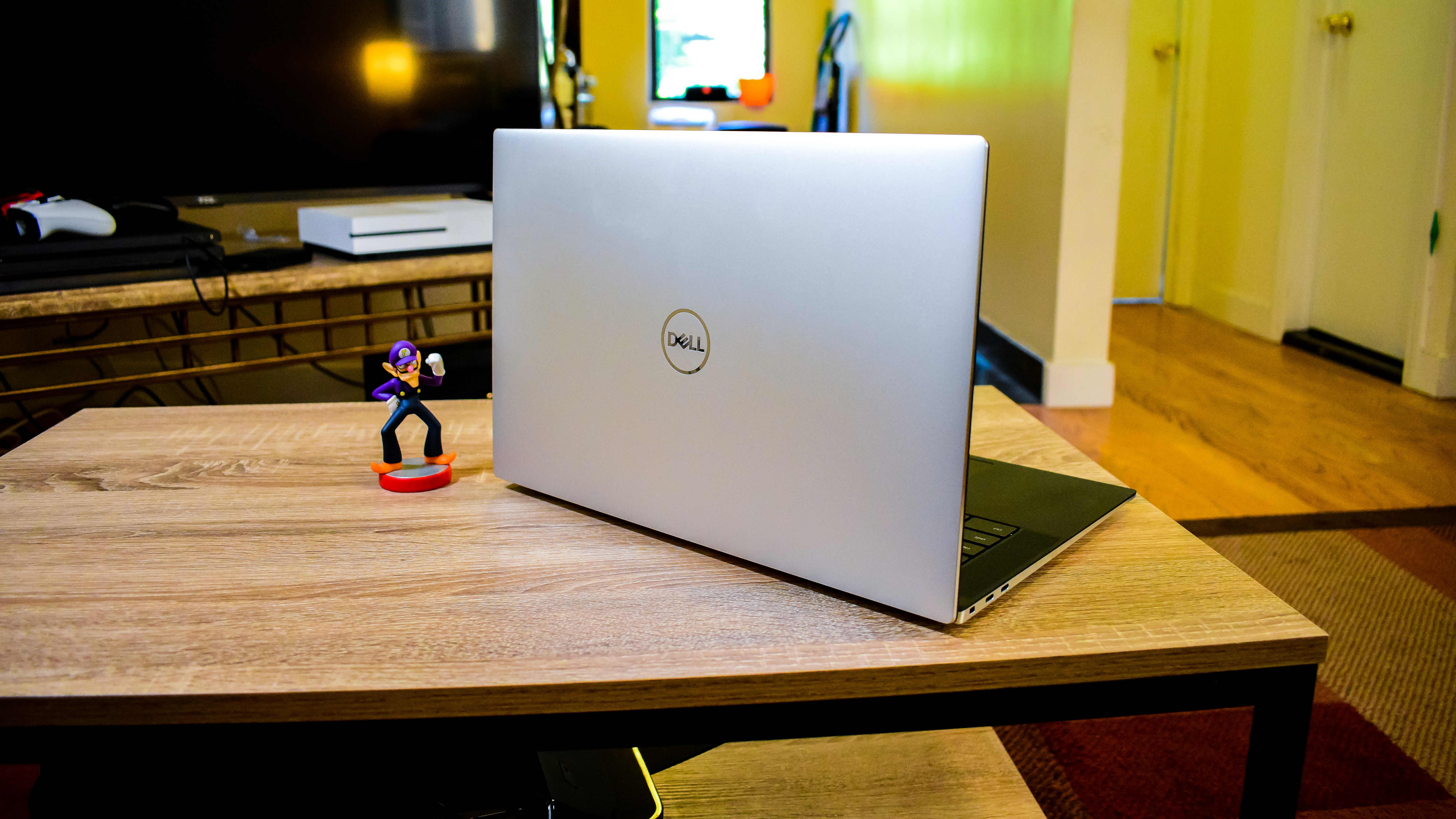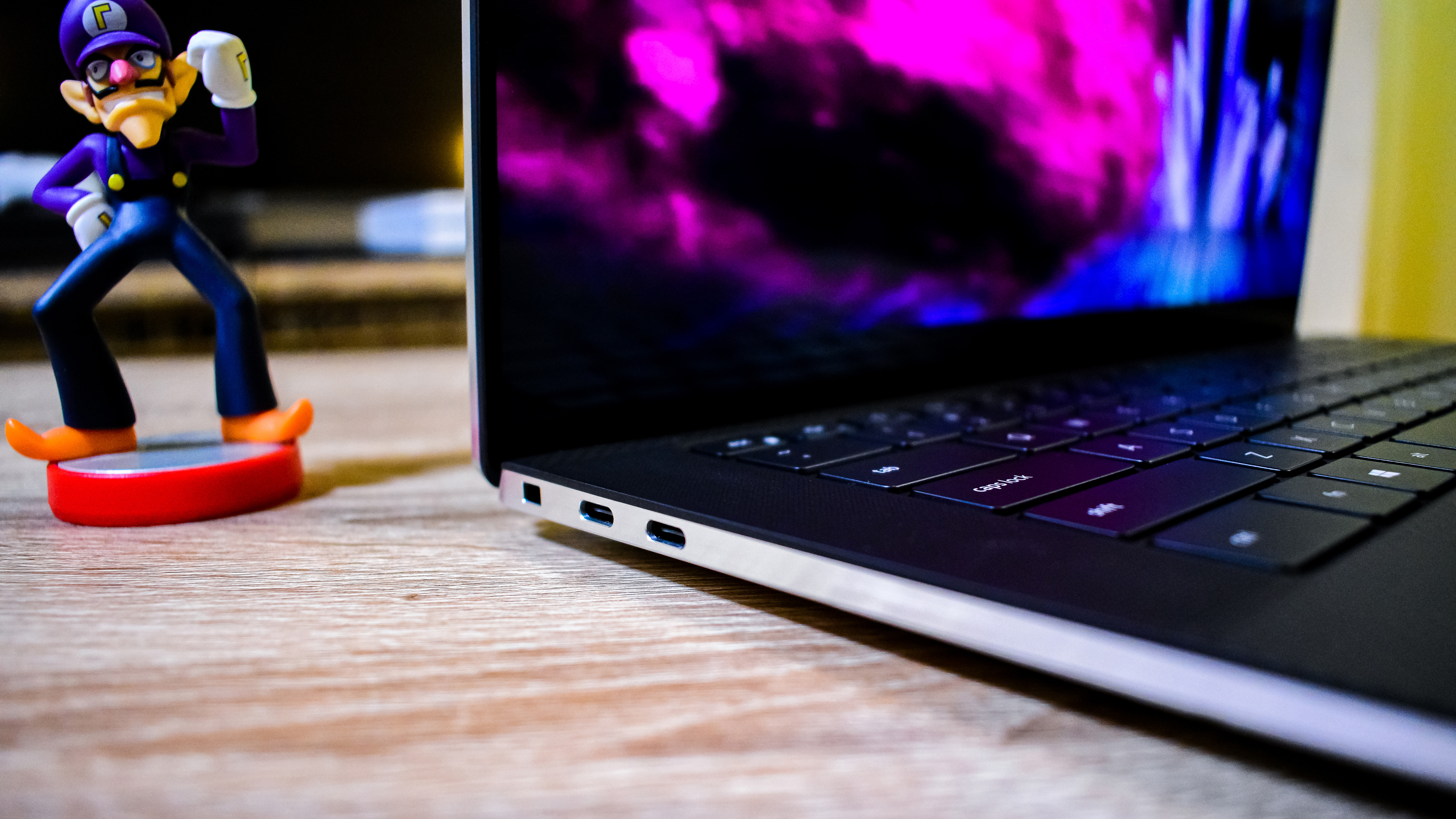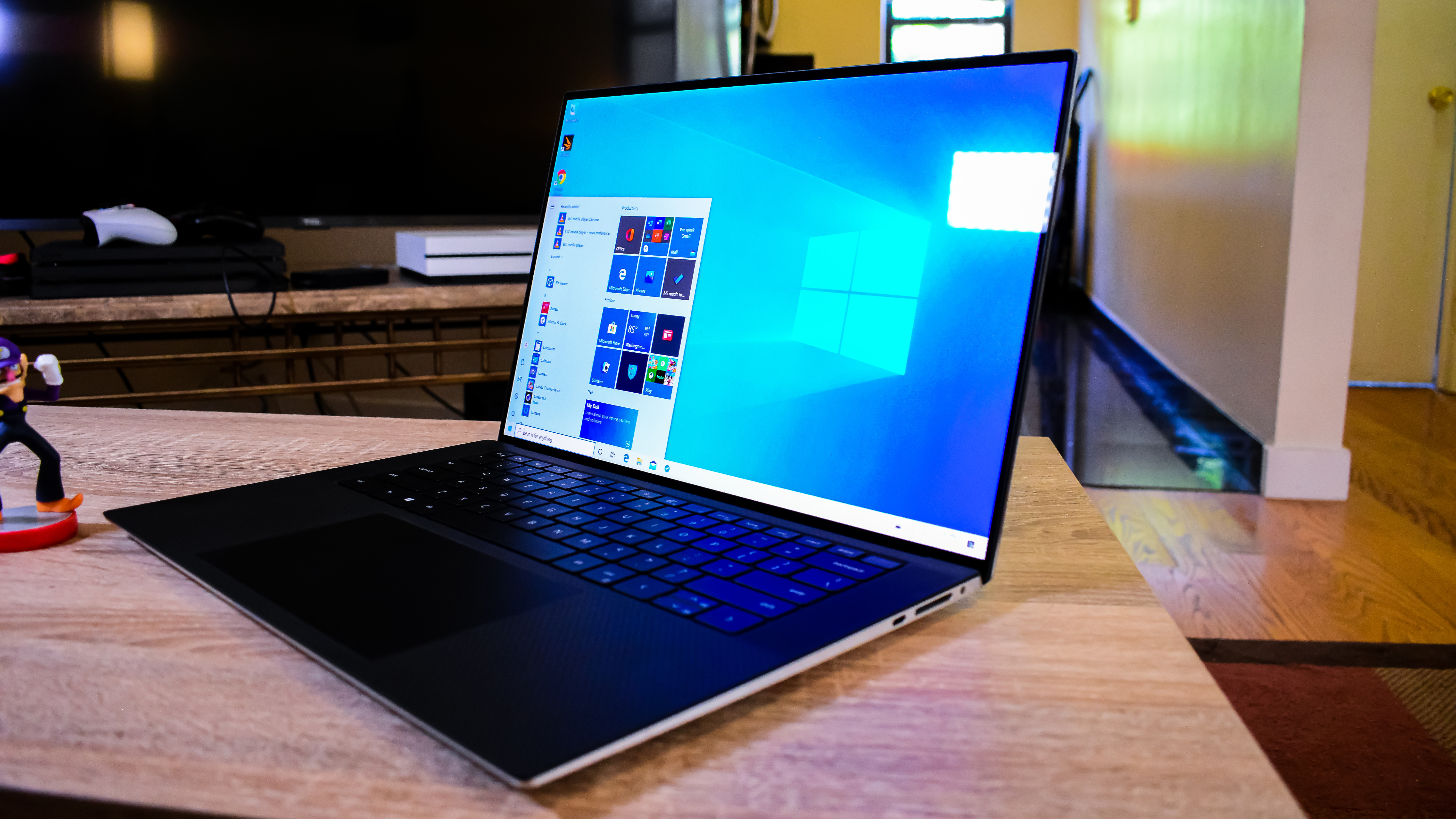Dell XPS 15 (2020)
The Dell XPS 15 line has always had a higher place in the portable food chain. But, it’s the 2020 model, the Dell XPS 15 (2020), that may be the closest any manufacturer has come to a perfect device.
With the Dell XPS 15 (2020), you’re getting a machine that is powerful enough to tackle most tasks this side of 3D design, and elevated enough to boast a keyboard and a trackpad that are both a pleasure to use as well as an impeccable display and great-sounding speakers. Combined with the line’s already stunning design elements, it’s become a paragon of excellent laptops.
Its relative affordability is somewhat of a selling point as well. While sitting at a higher price point than some of its rivals, the Dell XPS 15 (2020) is significantly more affordable than the 16-inch MacBook Pro. Its configuration with 256GB SSD, 8GB of RAM and a 10th-generation Intel Core i5 Comet Lake CPU will cost you $1,299 (about £1,030, AU$1,890). That’s much cheaper than the latter’s Intel i7 and 16GB of RAM configuration, which will set you back $2,399.
Whether it’s for casual gaming, productivity, or working on the go, switching to the Dell XPS 15 (2020) is an easy recommendation for most people. Especially if you’re not married to macOS.
- These are the best Dell laptops of 2020.

Price and availability
Here is the Dell XPS 15 (2020) configuration sent to TechRadar for review:
CPU: 1.3GHz Intel Core i7-10875H (8-core, 16MB Intel Smart Cache, up to 5.1GHz with Turbo Boost)
Graphics: Nvidia GeForce GTX 1650 Ti
RAM: 16GB DDR4 (2,933MHz)
Screen: 15.6-inch 4K (3,840 x 2,400) touch
Storage: 512GB SSD (PCIe, NVMe, M.2)
Ports: 2x USB-C 3.1 with Thunderbolt 3, 1 x USB-C 3.1, 1 x SD card reader, combi audio jack
Connectivity: Killer Wi-Fi 6 AX1650, 2 x 2, Bluetooth 5.0
Camera: 1080p IR Webcam
Weight: 4.5 pounds (2.05 kg)
Size: 13.57 x 9.06 x 0.71 inches (344.72 x 230.14 x 18 mm; W x D x H)
The Dell XPS 15 2020 is available now, starting at $1,299 (about £1,030, AU$1,890) in the US. For that price tag, you're getting a 10th-generation Intel Core i5 processor, 8GB of RAM and a 256GB SSD, all behind a 1080p non-touch display.
The starting configuration changes depending on where you live, though. For instance, in the UK, you can find the Dell XPS 15 starting at £1,599, where the core difference is a doubling of SSD space up to 512GB. But, in Australia, the XPS 15 starts at AU$3,698, getting you a Core i7-10750H, 16GB of RAM, a 512GB SSD and an Nvidia GeForce GTX 1650 Ti discrete GPU - something missing from the entry level models in both the US and UK.
Of course, the story doesn't end with the entry-level models. You can pack the XPS 15 with a ton of hardware, though the model we reviewed to the right isn't quite available. On Dell's website, a Dell XPS 15 with the Core i7-10875H is nowhere to be seen, instead capping with the 10750H. The difference between these two processors is minute at best, but it's still something to be aware of.
If you want the configuration listed to the right, you'll have to go to this specific link and configure it yourself. It'll set you back $2,299 (about £1,830, AU$3,350). If you want to go all out, however, you can get an XPS 15 kitted out with 64GB of RAM and a 1TB SSD for $2,749 (about £2,200, AU$4,010). With this level of hardware, this model will probably be reserved for folks that need to do some serious creative work, but the option is open.

Design
In terms of year-on-year laptop improvements, we have literally never seen a glow-up like the Dell XPS 15 2020. It's thinner, lighter, has smaller bezels and brings the speakers to the top of the device. With all of these improvements, the XPS 15 has catapulted ahead of the 13-inch model to be the Windows laptop to get.
Now we get it, not everyone wants to carry around a bulky 15-inch laptop, no matter what kind of performance improvements come with the beefier hardware. However, this new XPS 15 is just 0.71 inches (18mm) thick and weighs just 4.5 lb (2.05kg). Definitely not the lightest laptop in the world, but with this kind of hardware and a battery that lasts as long as it does, it's definitely more portable than it even needs to be.
As far as ports, things did get cut back quite a bit, with it being narrowed down to three Thunderbolt 3 ports, a SD card reader and a headphone jack. That does mean that folks that want to use a bunch of legacy peripherals will have to live that dongle life, but that's kind of the world we've been living in over the last few years anyway. The fact that Dell was gracious enough to include an SD card reader in a thinnish laptop in 2020 is more than enough to earn our praise, given that we're constantly on the hunt for our USB-C SD card adapter anyways.
With how gorgeous the laptop is, anyway, we'll easily look past this lack of legacy ports. Seriously, made entirely of CNC aluminum with clean edges and that typical Dell logo on the outside, this is a stylish laptop. And, the carbon fiber is back on the keyboard deck, and it's just as comfortable as ever, even if it may get a little grungy over time.
Next to the keyboard on either side, you'll find two upward-facing speaker grilles. Beneath these is a quad-speaker arrangement that is by far one of the best we've ever heard in a laptop, going right up against the latest 16-inch MacBook Pro.
One of our biggest problems with the Dell XPS 15 2019 was that the speakers were too weak to fill even a small room with decent sound, whereas the new model is good enough to listen to music for an extended period of time. Listening to Janelle Monae's Dirty Computer all the way through, the bass is punchy throughout, without harming the details in the rest of the arrangement.
This just proves that decent speakers in laptops are possible, and bottom firing speakers that sound like trash are inexcusable in premium laptops in 2020.
But it's not just the speakers that provide an excellent media experience. The display is simply out of this world. With a 3,840 x 2,400 display that hits 100% of the Adobe RGB color gamut and 500 nits of brightness, this is one hell of a laptop to watch your favorite shows and movies on - especially paired with those amazing speakers.
To make it even better, the display bezels are incredibly small, so practically all you see is screen. It adds even more beauty to an already beautiful laptop. This display is one of the biggest reasons to go for the XPS 15, whether you're a creative professional that needs a bright, color accurate display for work, or you just like high resolution shows and movies whenever you get a break.
Really, in terms of design, there's nothing to complain about. Dell's engineers have absolutely nailed it this time around, and it's pretty easy to see that the Dell XPS 15 is going to be the gold standard for prosumer laptops for the foreseeable future - though we would love to see someone top it.

Performance
Here’s how the Dell XPS 15 (2020) performed in our suite of benchmark tests:
Cinebench R20 CPU: 3,557 points
Cinebench R15 CPU: 1,519 points
3DMark Time Spy: 3,654; Fire Strike: 6,876; Sky Diver: 11,571
GeekBench 5: 1,283 (single-core); 7,408 (multi-core)
PCMark 10 (Home Test): 5,327 points
PCMark 10 Battery Life: 9 hours 44 minutes
Battery Life (TechRadar movie test): 6 hours 16 minutes
Packed with an Intel Core i7-10875H and an Nvidia GeForce GTX 1050 Ti, the Dell XPS 15 definitely falls into what we would call the "prosumer" market. It's not so powerful that professional video editors or 3D artists are going to jump for it, but it's definitely powerful for anyone that does that stuff for a hobby, or just doesn't want to get slowed down by any computing task that they may run into.
And, while the GTX 1650 Ti is technically a gaming GPU, the Dell XPS 15 is definitely not a gaming laptop, and the thin and light chassis design doesn't really extend itself to extended gaming sessions where heat could potentially cause performance issues.
Instead of playing the latest AAA games at native resolution with all the bells and whistles turned up to max, the gaming that this machine will be capable of is 1080p with medium settings, though you'll be able to play your favorite indie gems to your hearts content.
To wit, the Dell XPS 15 scores just 3,654 points in 3DMark Time Spy. To put that into perspective, the GTX 1660 Ti in the Surface Book 3 we just reviewed - paired with a much weaker CPU - scores 4,840 points in the same test. That's a 25% loss in performance, and means that we didn't really bother running pure gaming benchmarks. This laptop is clearly not built for that.
However, when it shines, the XPS 15 absolutely glows. The CPU performance here is extremely strong across the board, scoring a GeekBench 5 multi-core score of 7,408, which not only beats the Gigabyte Aorus 17G, a laptop with much more robust cooling, but comes within reaching distance of the AMD Ryzen 9 4900HS in the Asus Zephyrus G14 - color us impressed.
In such a thin and light chassis, the Dell XPS 15 provides workstation-level performance that won't weigh you down on your subway ride to work. Sure, the GPU could be stronger, but that would likely come with added bulk, as it would necessitate a more robust (and heavy) cooling system.

Battery life
The Dell XPS 15 we reviewed here comes strapped with a 86Whr battery, which is beefy for a laptop that's this thin. For the most part battery life absolutely reflects this, with the device getting 9 hours and 44 minutes of battery life in the PCMark 10 battery life test.
This test basically runs the laptop through a variety of workloads that you might encounter every day, and repeats those tasks until the battery is depleted. For office work, this laptop will easily last all day and a bit when you get home and are scrambling to find the charger.
However, our movie playback test tells a different story. In that test, we only saw 6 hours and 16 minutes. This ultimately comes down to the 4K touch display. So, if you plan on just binging Sailor Moon while lying in bed and trying to drown out reality for just a little bit, you might want to plug the laptop in.

Software and features
Dell unfortunately is one of those laptop manufacturers that loads up a bunch of its software even on its premium laptops. Fortunately it does stay out of the way, but with the entry-level version of the laptop coming with such a small SSD, we would love to see companies start making this software optional.
Before you go ahead and uninstall all of it, however, we would advise keeping Dell Update and Dell Customer Connect, especially if you aren't comfortable going on the hunt for driver updates whenever necessary. Yes, you can do everything these programs do yourself, but having these convenient programs isn't so bad.
The rest of the programs are entirely optional, like Dell Cinema Color, which will balance the color profile of your display around a few different presets. However, right out of the box, the XPS 15's display is pretty much perfect, so we don't see any reason to do this.
Dell knocks it out of the park when it comes to security features, however. This new XPS 15 features both Windows Hello flavors, allowing you to either log in with your face or your fingerprint. This might sound like overkill to some, but if you typically wear glasses or makeup, Microsoft's facial login isn't great, making the fingerprint scanner more reliable.
It's going to be exceedingly rare that anyone uses both of these options, but we love that Dell is giving folks the choice.

Buy it if...
You want a powerful laptop
Packed with Intel's latest Comet Lake-H processors, the XPS 15 will absolutely chew through pretty much any workload you throw at it.
You want a stylish piece of kit
The Dell XPS 15 is probably the most profound year-over-year glow-up we've ever seen in a laptop. At this point, it is probably the most stylish Windows laptop on the market, and definitely even gives the MacBook Pro a run for its money.
You want an affordable flagship
Unfortunately "Flagship" is typically synonymous with "expensive", but starting at just $1,299 (about ₤1,030, AU$1,890) in the US, the Dell XPS 15 is probably the most affordable device in its class.
Don't buy it if...
You want a gaming laptop
Because the laptop is packed with just an Nvidia GeForce GTX 1050 Ti at its highest configuration, we wouldn't recommend this device if gaming is one of your top priorities.
You want something smaller
While the Dell XPS 15 is definitely portable for a 15-inch laptop, it's still a 15-inch laptop. If you want something ultra-portable, we'd recommend checking out the best Ultrabooks and 13-inch laptops.
0 comments:
Post a Comment